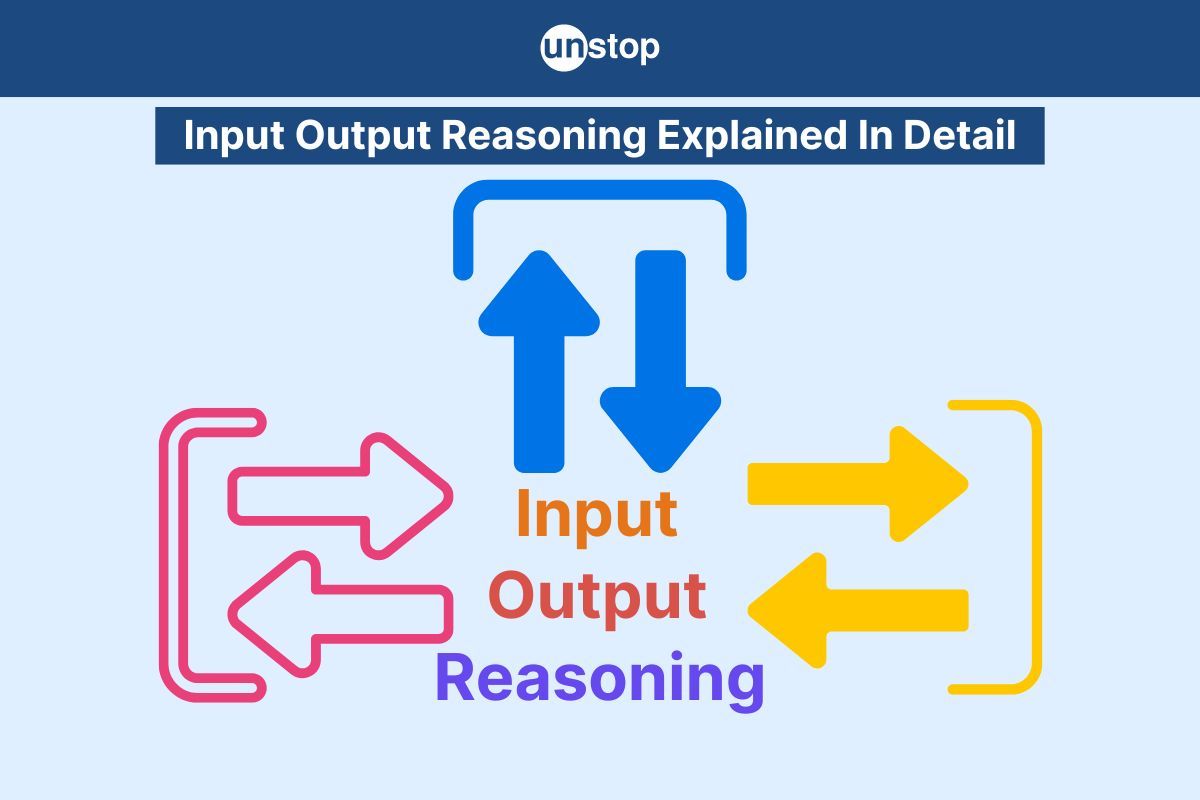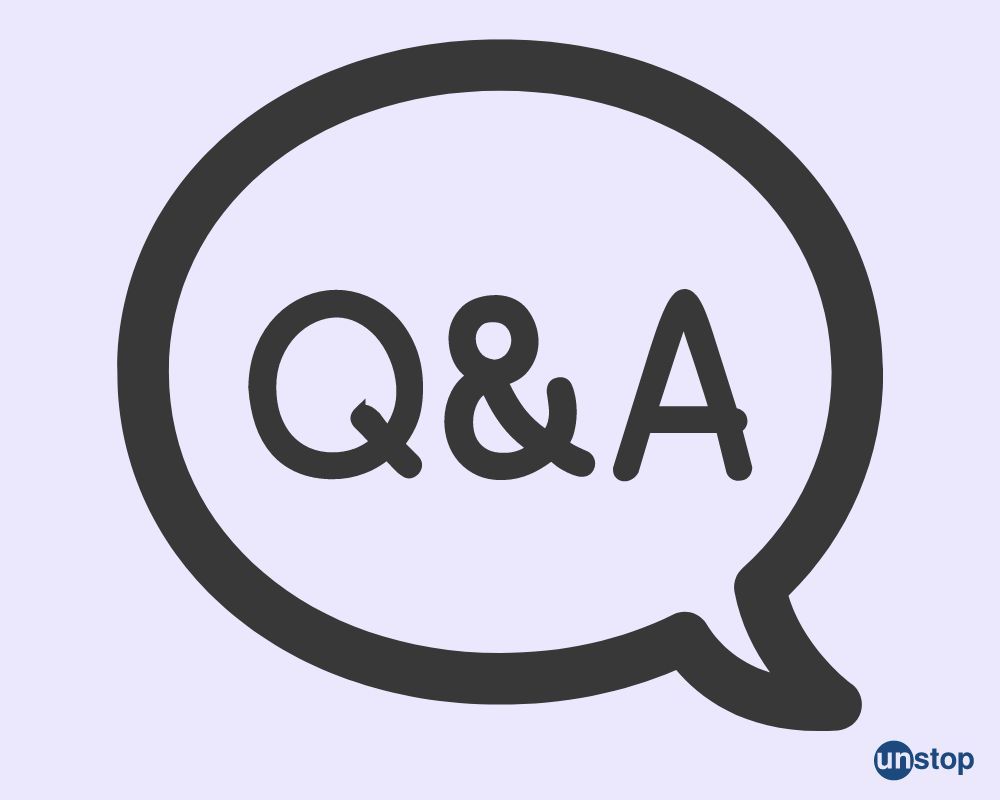- Step 1: The Groundwork
- Step 2: The Three Sections
- Step 3: Practice Makes Improvement
- The Secret Ingredient
- Understanding Basics Of Number Series
- Types Of Number Series Reasoning Questions
- Addition & Multiplication In Number Series
- Square & Cube-Based Number Series Patterns
- Missing Terms & Arranging Sequences
- Tricks & Tips For Solving Number Series
- Selected Number Series Questions With Solutions
- Frequently Asked Questions (FAQs)
- Must Know Terminologies in Blood Relation Questions
- Basic Approaches to Solve Blood Relation Questions
- Types Of Blood Relation Questions
- Tips For Solving Blood Relation Questions
- Multiple Choice Questions (MCQs) with Detailed Explanation
- Conclusion
- Frequently Asked Questions (FAQs)
- Letter Series In Logical Reasoning
- Types Of Letter Series Patterns
- Tips For Solving Letter Series Reasoning
- Best Practice Question Samples With Answers
- Conclusion
- Frequently Asked Questions (FAQs)
- Basics of Problems On Age-Related Questions
- Formula to Solve Problems on Ages-Related Questions
- Types of Age-Related Questions & Examples
- Tips & Tricks for Solving Ages Problems
- Best MCQs on Problems on ages with solved answers
- Conclusion
- Frequently Asked Questions (FAQs)
- Definition of Calendar
- Understanding Days of the Week
- What is a Leap Year?
- Concept of Odd Days in a Century
- Tips For Solving Calendar Reasoning Questions
- Best Calendar Reasoning Questions with Answers (MCQs)
- Frequently Asked Questions (FAQs)
- Basic Concepts of Clock
- Structure of a Clock
- Angle Equilavalence in Clock
- Tips For Solving Clock Questions
- Selected Clock Questions & Answers (MCQs)
- Conclusion
- Frequently Asked Questions (FAQs)
- Understanding The Concept Of Direction Sense
- Tips For Effective Problem-Solving In Direction Sense
- Practical Test Practice Questions And Answers
- Conclusion
- Frequently Asked Questions (FAQs)
- Importance Of Dice Reasoning
- Dice Numbers In Dice Reasoning
- Classification Of Dice
- Constructed Vs Deconstructed Dice
- Tricks & Tips For Solving Dice Problems
- Practice MCQs With Detailed Answers
- Conclusion
- Frequently Asked Questions (FAQs)
- Alphanumeric Series Defined
- Alphanumeric Series In Reasoning Tests
- Tips & Strategies For Solving Alphanumeric Series
- Practice Sample Questions With Detailed Answers
- Conclusion
- Frequently Asked Questions (FAQs)
- Concept Of Mirror Image Reasoning Explained
- Important Terms In Mirror Image Reasoning
- Types Of Mirror Images
- Identifying Correct Mirror Image
- Finding Clock's Mirror Image
- Tips To Solve Mirror Images
- Selected Practice Questions With Answers
- Conclusion
- Frequently Asked Questions (FAQs)
- Concept & Overview Of Input-Output
- Input-Output In Competitive Exams
- Types Of Input-Output Problems
- Strategies, Tips & Tricks For Solving Reasoning Questions
- Selected Practice Questions With Answers
- Conclusion
- Frequently Asked Questions (FAQs)
- Importance Of Finding The Odd One Out
- Tricks And Tips
- How to Find The Odd One Out?
- Solved MCQs with Detailed Explanation
- Conclusion
- Frequently Asked Questions (FAQs)
- Understanding Key Concepts
- Exploring Different Ranking Types
- Formula And Application Of Order And Ranking
- Tips For Solving Order & Ranking
- Selected Practice Questions And Answers
- Conclusion
- Frequently Asked Questions (FAQs)
- Importance Of Pipes & Cistern Aptitude
- Key Terminologies used in Pipes and Cisterns
- Pipes and Cisterns Formula with Examples
- Pipes and Cisterns Shortcut Tricks
- Tips For Solving Pipes & Cistern Problems
- Selected Questions & Answers For Practice (MCQs)
- Conclusion
- Frequently Asked Questions (FAQs)
- Key Concept in Boats and Streams
- Formulas Of Boats & Streams
- Distance & Time Formula
- Tips For Solving Boats & Streams Questions
- Selected Practice Questions With Answers (MCQs)
- Conclusion
- Frequently Asked Questions (FAQs)
- Concept of Mixture and Alligation
- Types Of Alligation Questions
- Formula for Solving Mixture & Alligation
- Tips For Solving Mixture And Alligation
- Selected Questions With Answers For Practice
- Conclusion
- Frequently Asked Questions (FAQs)
- Concepts and Definitions Related to Time and Work
- Important Time And Work Formulas
- Tricks and Tips to Solve Time & Work Questions
- Time And Work MCQs with Detailed Solution
- Conclusion
- Frequently Asked Questions (FAQs)
- What is Harmonic Progression(HP)?
- Formula to find the nth Term in Harmonic Progression
- Formula to find the Sum of the nth Term in HP
- What is Harmonic Mean?
- Harmonic Progression Solved Best MCQs
- Conclusion
- Frequently Asked Questions (FAQs)
- What is Mensuration in Maths?
- What are 2D figures in Mensuration?
- What are 3D figures in Mensuartion?
- Basic Terminologies In Mensuration
- Basic 2D Formulas in Mensuration
- Basic 3D Formulas in Mensuration
- 2D vs 3D in Mensuration
- Solved Questions With Solutions (MCQs)
- Conclusion
- Frequently Asked Questions (FAQs)
- Relationship Between Time, Speed And Distance
- Conversion Units Time, Speed And Distance
- Average & Relative Speed: Two Trains Moving in the same or opposite direction
- Solved MCQs on Time, Speed And Distance
- Conclusion
- Frequently Asked Questions (FAQs)
- What is Simplification in Maths?
- BODMAS Rule in Simplification Explained
- Simplification & Approximation Relation
- Key Terms in Simplification
- Examples Of Simplification Techniques
- Simplification Questions With Solved Answers (MCQs)
- Conclusion
- Frequently Asked Questions (FAQs)
- Height And Distance Important Terms
- Right Angled Triangle In Trigonometry
- Trigonometric Ratios
- Solved Examples For Better Understanding
- Height And Distance Applications In Trigonometry
- Height And Distance Practice Questions & Answers
- Conclusion
- Frequently Asked Questions (FAQs)
- Defining Interest Types
- Simple Interest Vs. Compound Interest
- Selected Solved Questions & Answers
- Conclusion
- Frequently Asked Questions (FAQs)
- Basic Concepts Of Profit And Loss
- Determining Selling Price
- Calculating Discounts
- Formulas For Calculating Profit And Loss
- Examples Of Profit And Loss
- Profit & Loss Questions With Detailed Solution
- Conclusion
- Frequently Asked Questions (FAQs)
- Defining Angle Of Elevation
- Key Terms Used In Angle Of Elevation
- Angle of Elevation Formula with Example
- Angle of Elevation vs. Angle of Depression
- Angle of Elevation MCQs with Answers
- Conclusion
- Frequently Asked Questions (FAQs)
- Defining HCF And LCM
- Calculation Methods Of HCF And LCM
- HCF By Prime Factorization Method
- LCM By Prime Factorization Method
- Difference Between HCF And LCM
- HCF & LCM Practice Questions With Answers
- Conclusion
- Frequently Asked Questions (FAQs)
- What is fraction and decimal?
- Understanding Decimal Fraction
- Place Value in Decimal Fraction
- Mathematical Operations with Decimal Fraction
- Practice with Solved Examples
- Summary
- Frequently Asked Questions
- All About Decimals
- All About Fractions
- How to Convert a Decimal into Fraction
- Simple vs Recurring Decimals
- Converting Recurring Decimals to Fractions
- Conversion Charts
- Practice Questions (With Solutions)
- Closing Thoughts
- Frequently Asked Questions
- What is Arithmetic Mean?
- Arithmetic Mean Formula- Ungroup Data & Group Data
- Merits of Arithmetic Mean
- Demerits of Arithmetic Mean
- Alternatives to Arithmetic Mean
- What is the Weighted Arithmetic Mean?
- Arithmetic vs. Geometric Mean
- Arithmetic Mean Application in Statistical Analysis
- Arithmetic Mean Practice Questions with Explanation
- Frequently Asked Questions
- What is Geometric Progression?
- Key Properties of Geometric Progression
- General Form Of Geometric Progression
- General Term or the Nth Term of Geometric Progression
- The sum of nth Terms of GP
- Types Of Geometric Progression
- Solved Questions and Answers of GP
- Conclusion
- Frequently Asked Questions (FAQs)
- Average in Maths
- Average Formula in Maths
- Differentiating Types of Average
- How to Calculate Average of Negative Numbers?
- Practical Applications of Averages
- Average Questions For Practice
- Frequently Asked Questions
- What is Simple Interest in Maths?
- Simple Interest Formula Explained
- Simple Interest Formula for Years, Months & Days
- Simple Interest Examples & Practice Questions
- Conclusion
- Frequently Asked Questions (FAQs)
- Defining Mathematical Ratios
- Understanding Proportions Fundamentals
- Differentiating Ratios from Proportions
- Ratio and Proportion Formulas
- Properties of Ratio and Proportion
- How to Solve Ratio and Proportion Problems
- Ratio and Proportion Problems (With Solutions)
- Summary
- Frequently Asked Questions
- What is Number in Maths?
- Types of Numbers With Example
- Real vs Complex Numbers Explored
- Basic Operations on Numbers
- Practice Questions (With Solutions)
- Frequently Asked Questions
- What is Arithmetic Progression (AP) in Maths?
- Important Terminologies in Arithmetic Progression
- Basic Terms in Arithmetic Progression
- General Form Of Arithmetic Progression Series
- Types Of Arithmetic Progression
- Solved Questions With Explanation (MCQs)
- Conclusion
- Frequently Asked Questions (FAQs)
- Understanding Basic Concept
- Importance Of Train Problems In Aptitude
- Tips To Solve Train Problems
- Selected Practice Questions & Answers
- Conclusion
- Frequently Asked Questions (FAQs)
- Definition Of Mode
- Calculating Mode For Ungrouped Data
- Calculating Mode For Grouped Data
- Bimodal, Trimodal & Multimodal Distributions
- Comparing Mean, Median & Mode
- Selected Practice Questions With Answers
- Conclusion
- Frequently Asked Questions (FAQs)
- Important Concept In Races And Games
- Calculating Time, Speed & Distance
- Importance Of Races And Games Problems
- Sample Practice Questions With Answers
- Conclusion
- Frequently Asked Questions (FAQs)
- Types Of Partnership
- Formula For Partnership Questions
- Tips To Solve Partnership Aptitude Questions
- Selected Partnership Questions (Practice MCQs)
- Conclusion
- Frequently Asked Questions (FAQs)
Input Output Reasoning: Concept, Strategy, Questions And Answers

Did you know that input-output reasoning can boost problem-solving skills by up to 50%? Understanding the relationship between what goes in and what comes out is crucial for logical reasoning and decision-making.
Mastering this concept can enhance your analytical abilities and approach challenges with a strategic mindset. Stay tuned to uncover practical tips and strategies to sharpen your input-output reasoning skills and develop your problem-solving game.
Concept & Overview Of Input-Output
To begin with, let us understand the concept of input-output:
Input Elements
In reasoning questions, input refers to the initial data provided to solve a problem. This can include numbers, letters, symbols, or a combination of these elements. Identifying the input is crucial as it serves as the starting point for the solution process.
Output Elements
On the other hand, output signifies the result obtained after applying specific operations or transformations to the input. It is the answer or solution derived from processing the given data. Recognizing the output is essential in understanding how the input has been manipulated to reach a conclusion.
Transformation Steps
To move from input to output in reasoning questions, several steps are involved. Firstly, carefully examine the given input to understand its structure and components. Next, logical operations or rules based on patterns observed in the data are applied. Finally, these operations will be executed systematically to derive the output accurately.
Pattern Recognition
One key aspect of solving input-output reasoning questions is identifying patterns followed in rearranging data. These patterns could involve arithmetic progressions, geometric sequences, alphabetical arrangements, or other logical sequences. By recognizing these patterns, one can predict how the input will be transformed into the output.

Input-Output In Competitive Exams
Input-output reasoning plays a crucial role in Government exams, evaluating candidates' logical thinking and analytical skills. These questions assess one's ability to follow a sequential output based on a given set of elements.
Mastering this concept is vital as it enhances problem-solving capabilities, especially when letters, digits, or directions must be rearranged systematically. Candidates should allocate time to practice input-output questions, as they usually carry significant weight in government exam patterns.
Types Of Input-Output Problems
Let us study the types of input-output problems:
Word Rearrangement
Input-output problems often involve rearranging words based on specific rules or patterns. This type requires identifying rules governing word transformations to predict the output accurately.
When presented with a set of words, observe how they change from input to output. Look for commonalities such as alphabetical rearrangements or positional shifts within words.
Number Series
In this category, numerical values undergo transformations following a certain rule. Identify the pattern by analyzing how numbers change from input to output sequences.
Examine the relationship between consecutive numbers to decipher the underlying rule. Focus on arithmetic operations, prime numbers, or geometric progressions to crack the code.
Strategies, Tips & Tricks For Solving Reasoning Questions
Let us study some of the strategies, tips and tricks for solving input and output questions:

Logical Analysis
When solving reasoning questions, start by carefully analyzing the given input-output pairs. Look for patterns and relationships between the inputs and outputs to identify the underlying solution.
Break down the steps in each input-output pair to understand how the transformation occurs. By dissecting the process, you can uncover the answer more effectively.
Tabular Representation
Utilize tabular forms to organize the data systematically. Create columns for each step of the input-output process, making it easier to track the numbering or number arrangement.
List out the transformations in a structured manner within the table. This method helps manage longer inputs efficiently by providing a clear visual representation of each step.
Reading Techniques
Careful reading is essential when tackling input-output reasoning questions. By analyzing each step methodically, you can identify patterns efficiently.
Verbal Solving
Avoid verbal solving methods as they often lead to overlooking critical steps in the reasoning process. Opt for a more systematic approach instead.
Pattern Recognition
Utilize identified patterns to solve input-output reasoning questions accurately and swiftly. Recognizing recurring sequences can significantly enhance your problem-solving speed.
Selected Practice Questions With Answers

Remember, practice makes perfect! Enhance your reasoning abilities through consistent effort and dedication. Provided below are some best-selected practice questions with detailed answers:
Question 1: Given a series of numbers, what is the next number in the input-output sequence?
a) A random number
b) A number unrelated to the pattern
c) A smaller number
d) The number following the pattern
Answer: d) The number following the pattern
Explanation: To determine the next number in the input-output sequence, identify the pattern and apply it to find the following number.
Question 2: In input-output reasoning, what role do operations play in transforming input to output?
a) They confuse the analysis
b) They provide irrelevant details
c) They contradict the sequence
d) They define the sequence of transformations
Answer: d) They define the sequence of transformations
Explanation: Operations define how the input is transformed to produce the output in an input-output sequence.
Question 3: When analyzing input-output sequences, what should be the focus of attention?
a) The pattern and transformations applied
b) The position of the numbers
c) The randomness of the numbers
d) The length of the sequence
Answer: a) The pattern and transformations applied
Explanation: The focus should be on identifying the patterns and transformations applied to the input to produce the output.
Question 4: What is the primary purpose of identifying the rule in an input-output sequence?
a) To predict the next number
b) To contradict the sequence
c) To introduce randomness
d) To confuse the analysis
Answer: a) To predict the next number
Explanation: Identifying the rule helps in predicting the next number in the input-output sequence.
Question 5: In input-output reasoning, what does it mean when a series follows a specific pattern?
a) It adheres to a consistent rule
b) It contradicts the sequence
c) It has varying patterns
d) It includes random numbers
Answer: a) It adheres to a consistent rule
Explanation: When a series follows a specific pattern, it adheres to a consistent rule or operation applied to each number.
Question 6: When analyzing an input-output sequence, what should be done with the identified pattern?
a) Ignore it
b) Alter it
c) Confuse the analysis
d) Apply it to find the next number
Answer: d) Apply it to find the next number
Explanation: The identified pattern should be applied consistently to find the next number in the sequence.
Question 7: What is the significance of identifying the rule in an input-output sequence?
a) It complicates the analysis
b) It introduces confusion
c) It contradicts the sequence
d) It helps in predicting future numbers
Answer: d) It helps in predicting future numbers
Explanation: Identifying the rule is crucial for predicting future numbers and understanding the sequence.
Question 8: In input-output reasoning, what role do patterns play in the analysis of sequences?
a) They contradict the sequence
b) They introduce randomness
c) They confuse the analysis
d) They provide clues for the rule
Answer: d) They provide clues for the rule
Explanation: Patterns provide clues that help in identifying the rule or operation applied to the input-output sequence.
Question 9: When analyzing an input-output sequence, what does it mean to determine the rule?
a) To ignore the pattern
b) To introduce new operations
c) To confuse the analysis
d) To identify the consistent operation
Answer: d) To identify the consistent operation
Explanation: Determining the rule involves identifying the consistent operation or transformation applied to each number.
Question 10: What is the primary difference between input and output in input-output reasoning?
a) Input is irrelevant
b) Input is a random number
c) Input is larger
d) Input is the initial number
Answer: d) Input is the initial number
Explanation: Input refers to the initial number or numbers in the sequence, while output refers to the subsequent numbers obtained after applying the rule or operation.
Conclusion
You've covered the ins and outs of input-output reasoning, grasped key concepts, learned strategies and tips, and practised with real examples. Now, it's time to put your skills to the test. Dive into more practice questions, challenge yourself with varying complexities, and track your progress.
Stay focused, stay determined, and watch your skills grow. Keep practising, keep learning, and keep mastering input-output reasoning!
Quiz Time To Test Your Mind
Frequently Asked Questions (FAQs)
1. What is the importance of understanding the Input-Output concept in reasoning?
Understanding the Input-Output concept is crucial as it forms the basis for solving complex problems efficiently, especially in competitive exams. It helps in developing logical thinking and analytical skills required for success in such exams.
2. How can one enhance their skills in solving Input-Output reasoning questions?
To enhance skills in solving Input-Output reasoning questions, consistent practice with a variety of problem types is essential. Applying different strategies, learning key concepts, and analyzing sample questions help in mastering this topic effectively.
3. What are the key strategies for solving Input-Output reasoning questions?
Key strategies for solving Input-Output reasoning questions include identifying patterns, working systematically through the data, using elimination techniques, and practising time management. These strategies aid in approaching problems methodically and improving accuracy during exams.
4. How can one effectively practice Input-Output reasoning with real examples?
Practising with real examples involves applying learned concepts to actual scenarios. By attempting sample questions that mimic exam patterns, individuals can refine their problem-solving abilities, understand different question formats, and gain confidence in tackling similar challenges during assessments.
5. Why should candidates focus on mastering Input-Output reasoning tips and tricks?
Mastering tips and tricks for Input-Output reasoning provides an edge by offering shortcuts and efficient methods to solve problems quickly. By familiarizing themselves with these techniques, candidates can save time during exams, increase accuracy rates, and boost overall performance significantly.
Suggested reads:
- Decision Making Reasoning- Key Concepts, Tips, Question & Answer
- Mirror Image Reasoning | Concepts And Tips With Question & Answer
- Alphanumeric Series- Tips, Strategies, Practice Question & Answer
- Dice Reasoning: Types & Tricks Explained With Question & Answer
- Direction Sense: Verbal Reasoning Test Practice Question & Answer
Instinctively, I fall for nature, music, humor, reading, writing, listening, traveling, observing, learning, unlearning, friendship, exercise, etc., all these from the cradle to the grave- that's ME! It's my irrefutable belief in the uniqueness of all. I'll vehemently defend your right to be your best while I expect the same from you!
Login to continue reading
And access exclusive content, personalized recommendations, and career-boosting opportunities.
Subscribe
to our newsletter
















Comments
Add comment